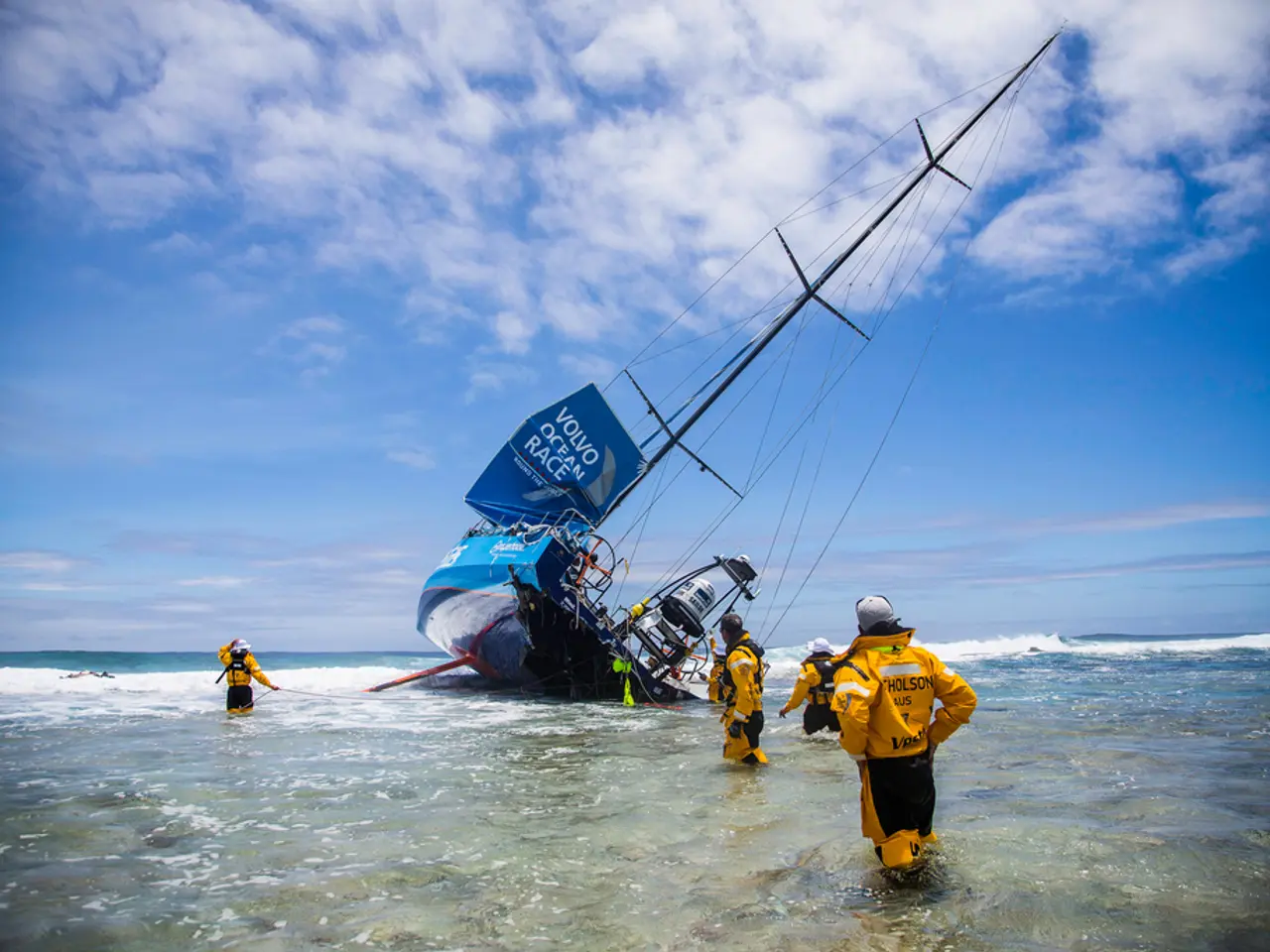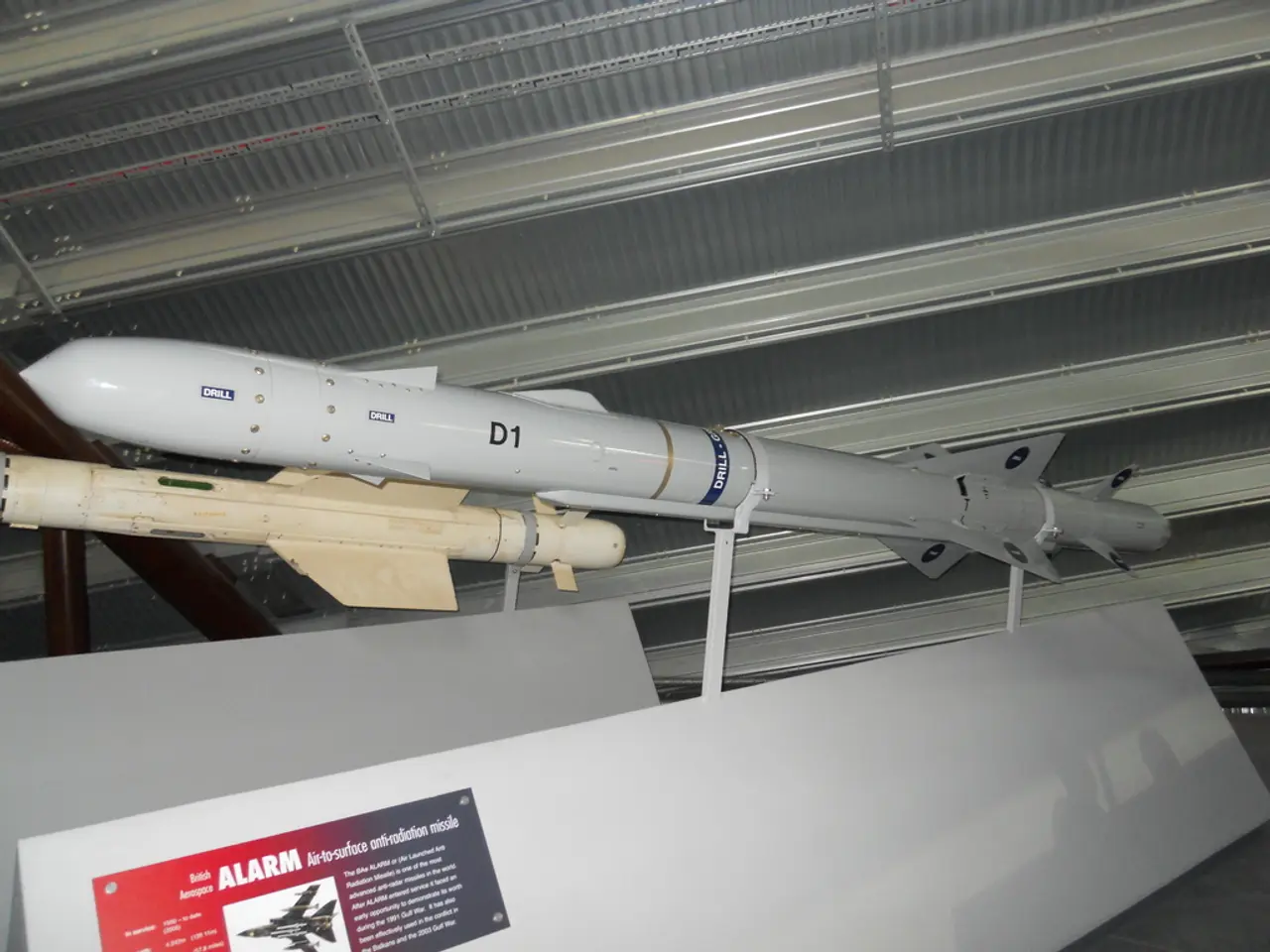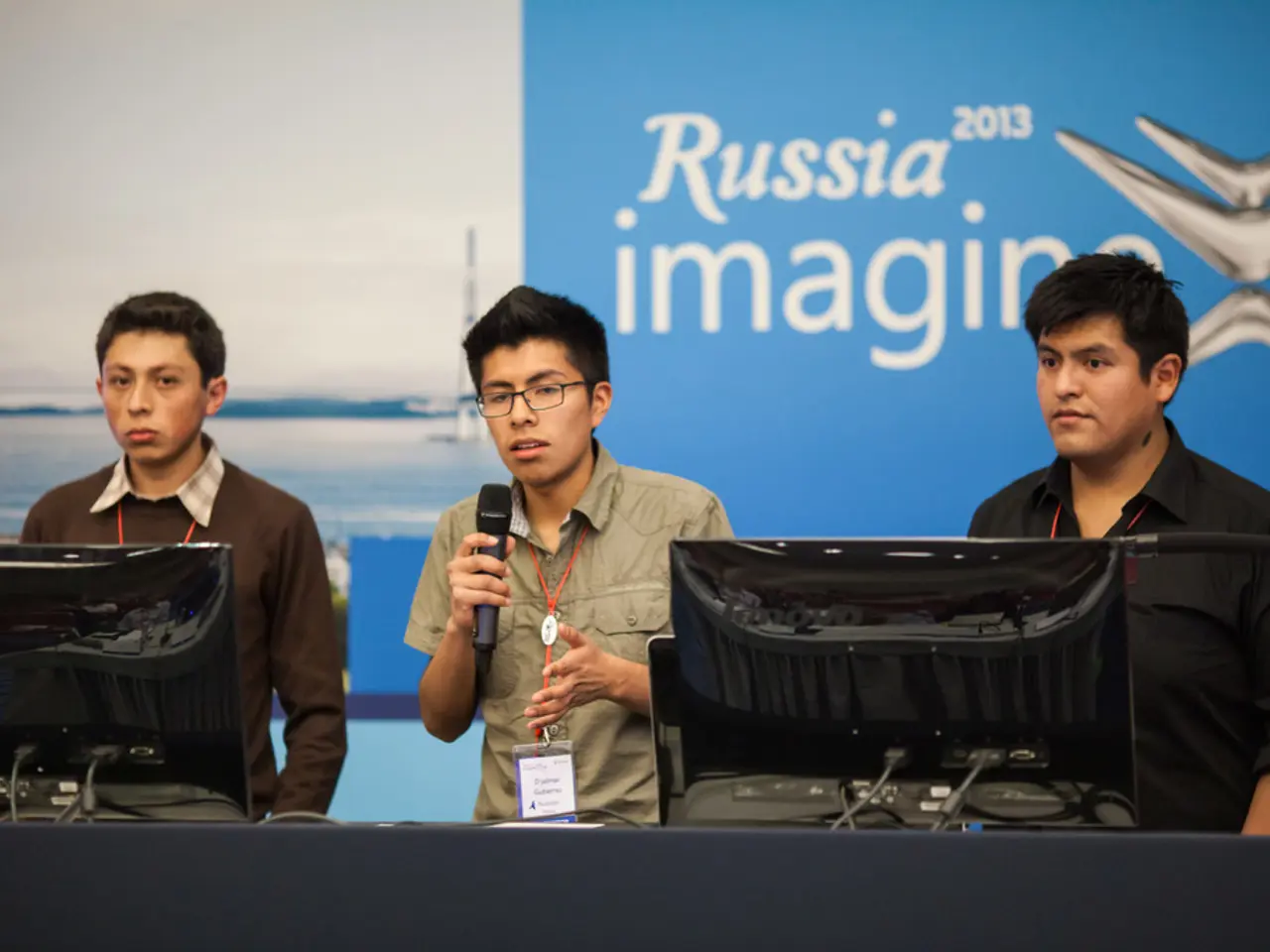Italian waters see the return of SEA-EYE 5, operational once more
In the central Mediterranean, the Sea-Eye 5 rescue ship has resumed its mission, despite ongoing legal proceedings and concerns about funding for civilian sea rescue operations. The vessel, now equipped with medical personnel on board, is cooperating with unspecified parties to ensure urgent medical care for people in distress at sea.
The current mission marks the first since the Sea-Eye 5's 20-day detention in Pozzallo, Sicily, following a rescue operation that saved 65 lives. This detention, imposed by Italian authorities, is now the subject of a lawsuit filed by Sea-Eye, challenging the administrative detention and the associated fine.
Dr. Christine Winkelmann, project director of German Doctors e.V., is among the medical personnel deployed on board the Sea-Eye 5. Her team is ready to provide essential medical care to those in need.
The Sea-Eye 5's resumption of operations comes amidst a broader context of funding concerns for civilian sea rescue efforts. While the U.S. Coast Guard receives significant funding for its operations, including maritime activities, the question of funding for civilian sea rescue remains unaddressed.
In the international context, particularly in the central Mediterranean, civilian search and rescue efforts are crucial due to the lack of sufficient state-level engagement. The civil fleet, composed of NGOs and volunteers, has been active since 2015, rescuing over 175,000 people in the decade since its inception.
If funding for civilian sea rescue were to be reduced or stopped, several implications could arise. The burden on non-governmental organizations might increase, potentially straining their resources and capacity to respond effectively. Reduced capacity for search and rescue could lead to more casualties, as witnessed in the central Mediterranean. There might also be increased international pressure on governments to assume more responsibility for maritime rescue operations.
Gorden Isler, chairman of Sea-Eye, has been vocal about his criticism of the federal government's stance. He accuses the government of shirking its responsibility and leaving the rescue of human lives to civilian sea rescue and Mediterranean coastal countries. Isler further claims that the federal government's actions are a deliberate breach of humanitarian values.
Sea-Eye's efforts are not without precedent. This year, the organization has won three lawsuits against unlawful detentions by Italian authorities. The organisation has also faced legal issues with Italian authorities in the past.
As the Sea-Eye 5 continues its mission, the future of civilian sea rescue remains uncertain. The ongoing legal proceedings and funding concerns highlight the challenges faced by organisations like Sea-Eye in their efforts to save lives at sea.
- The policy-and-legislation surrounding civilian sea rescue operations, such as the detention of the Sea-Eye 5 ship, is a matter of political debate and general news, with Sea-Eye currently engaged in lawsuits challenging such administrative detentions.
- The recent resumption of operations by the Sea-Eye 5 vessel, equipped with medical personnel, serves as a reminder of the critical role that crime-and-justice issues, such as the provision of urgent medical care to distressed individuals at sea, play in these operations.
- As the Sea-Eye 5 continues its mission, car-accidents, specific to rescue operations, could occur if the capacity for search and rescue is reduced due to funding concerns, potentially leading to more casualties in the central Mediterranean.






